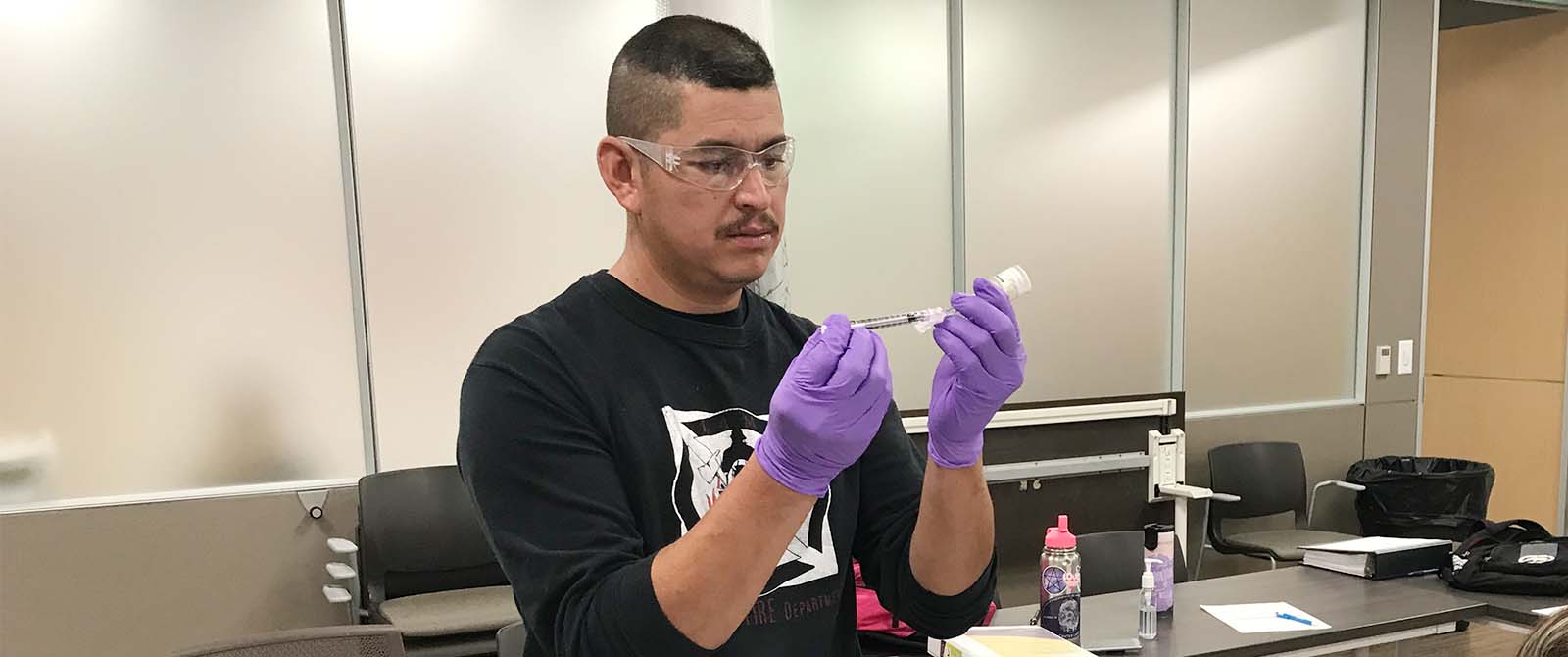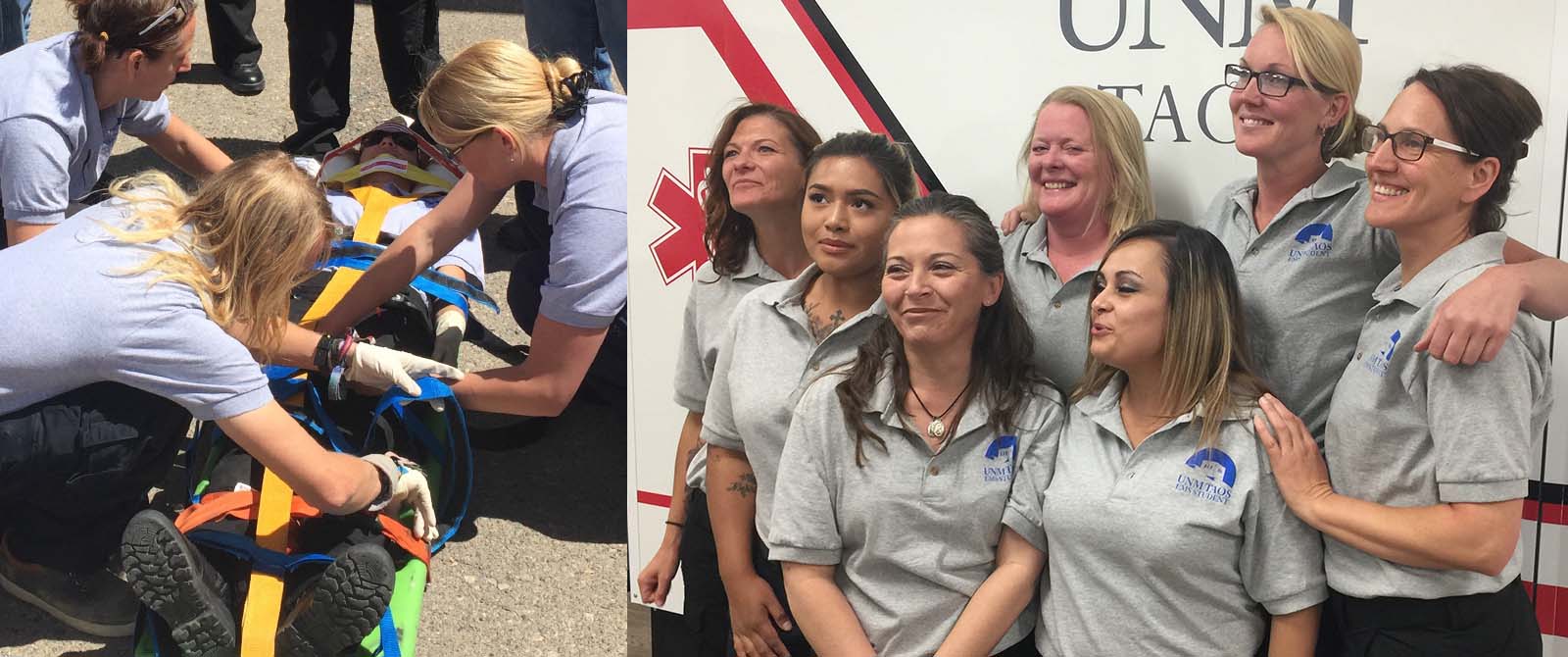Emergency Medical Services
Emergency Medical Services (EMS) is an exciting field where First Responders, EMT-Basics, EMT-Intermediates, and Paramedics work on the front lines of community and emergency healthcare. EMS providers can help save lives, reduce suffering, and care for people.
This program is designed to meet the educational requirements for professional licensure in New Mexico. This includes preparation for the National Registry of EMTs (NREMT) exam, which is required for licensure as an EMT-Basic, EMT-Intermediate, and First Responder. We have not yet determined whether the program meets licensure requirements for other states. Please speak with the UNM-Taos EMS Program advisors for further information.
Associate of Science in Emergency Medical Services (Degree Sheet)
EMS licensure allows one to work in a variety of jobs and environments including: ambulances, clinics, hospitals, fire departments, ski patrol, and wilderness rescue.
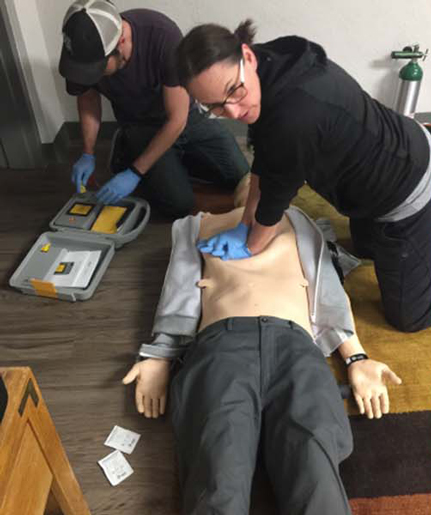
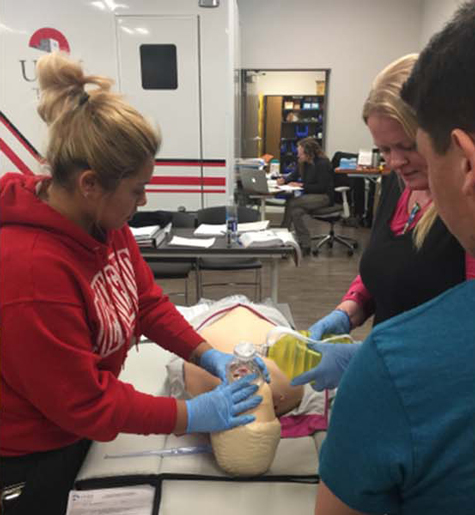
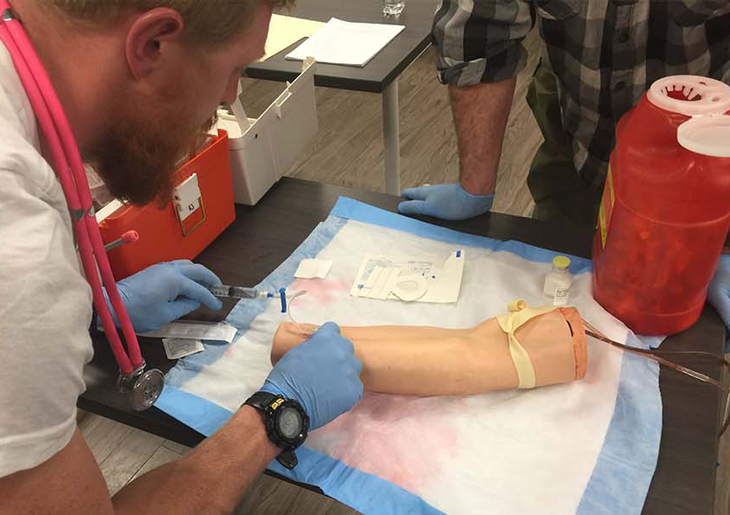
Career Pathways
Emergency Medical Services (EMS) is a growing field across the country. According to the Bureau of Labor and Statistics the demand for licensed EMS providers will increase 24% by 2024. With moderate to high demand in most of Northern New Mexico. EMS employers in the Taos and Enchanted Circle region are actively hiring.
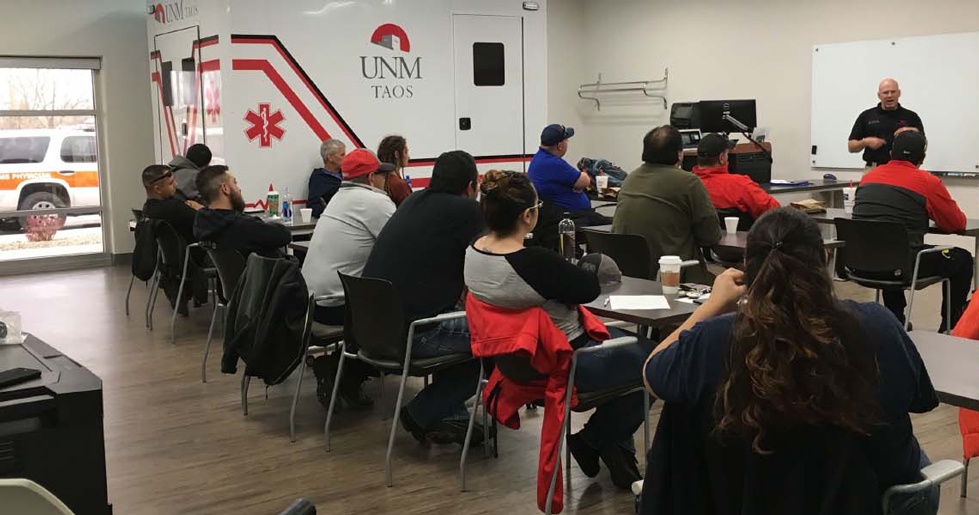
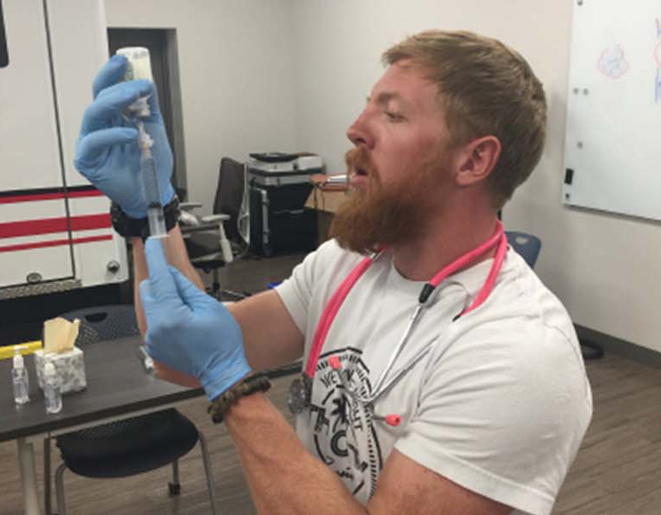
Academic Pathways
UNM-Taos now offers an associate of science in EMS (AS-EMS) which satisfies the prerequisites for entering the UNM paramedic program as well as nearly all pre-nursing requirements. UNM main campus in Albuquerque offers the bachelor's degree at the paramedic level in EMS. This degree has many possible focuses from community paramedicine, to premedical, to education and administration. See the details below. Talk to an advisor about how to get started on an associate degree in EMS.
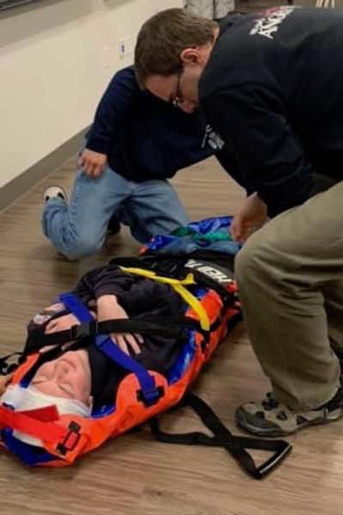
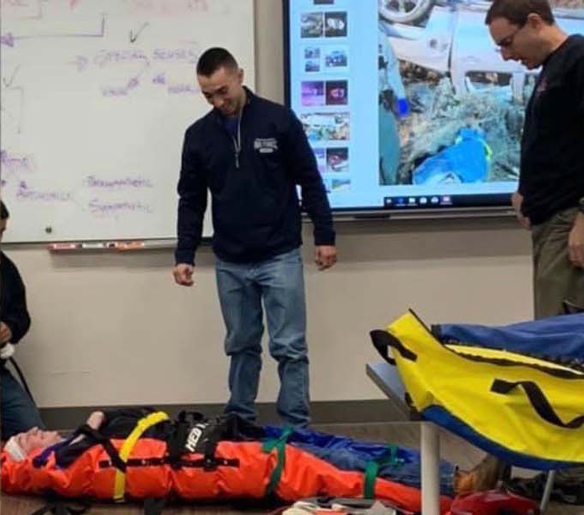
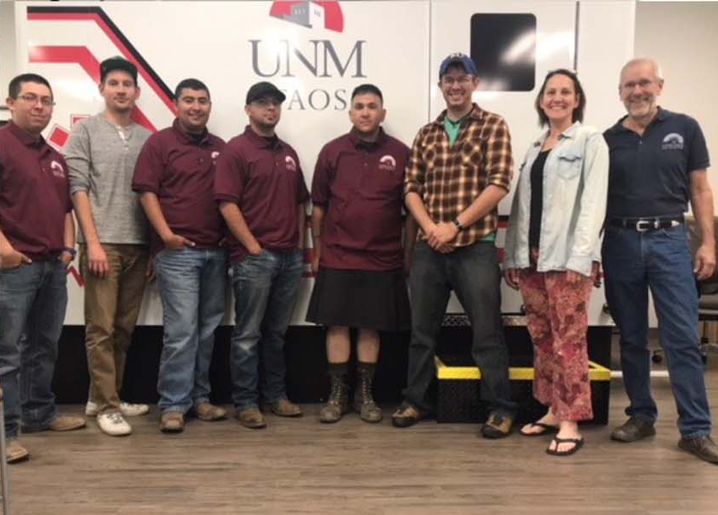
Courses
What follows is a list and descriptions of our EMS courses. You do not need to be a degree-seeking student to take any of the courses.
EMS 106 First Responder (EMR)
This 80-hour course is ideal for firefighters, ski patrol, law enforcement, park rangers, search and rescue, etc. First Responders are often first on scene for emergencies. These essential healthcare providers initiate life-saving stabilization and care and prepare patients for transport to the hospital.
This program is designed to meet the educational requirements for professional licensure in New Mexico. This includes preparation for the National Registry of EMTs (NREMT) exam, which is required for licensure in New Mexico as an EMS First Responder. We have not yet determined whether the program meets licensure requirements for other states. Please speak with the UNM-Taos EMS Program advisors for further information.
EMS 113 Emergency Medical Technician Basic (EMT-B). (8 credit hours)
This course consists of 180-192+ hours of didactic instruction including both lecture and psychomotor skills instruction covering a range of foundational EMT Basic curriculum topics and EMT- basic level skills. Additionally, there is a clinical component where the learner will be required to assess a minimum of 10 patients in an approved clinical/field environment.
This program is designed to meet the educational requirements for professional licensure in New Mexico. This includes preparation for the National Registry of EMTs (NREMT) exam, which is required for licensure in New Mexico as an EMT-Basic. We have not yet determined whether the program meets licensure requirements for other states. Please speak with the UNM-Taos EMS Program advisors for further information.
EMS 142 EMT-Basic Lab (2 credit hours)
The EMT lab is integrated within the EMT course. The lab includes hands-on skills training, simulation, and scenarios, among other activities.
EMS 193 EMT Academic Strategies (2 credit hours)
This companion to the EMT-Basic course is designed to reduce didactic and homework workload while improving exam scores and overall success in the program. It is required for all EMT-Basic students.
EMS 120 Introduction to EMS Systems (3 credit hours)
This course is intended to provide students with fundamental knowledge of Emergency Medical Services, EMS systems, EMS research, and an overview of prehospital emergency medicine. It is also a goal of this course to augment and enhance college and workforce preparedness. Students and the instructors will use a variety of reading, writing, demonstration, lecture, psychomotor interaction, video, and more, to advance learning.
EMS 180 EMT-Intermediate (AEMT) (5 credit hours)
Students who currently hold a New Mexico EMT-Basic license are eligible for this program, which builds on the skills from the basic course and affords students clinical rotations as well as didactic and psychomotor lab work. This course consists of a minimum of 178 hours of didactic instruction including both lecture and psychomotor lab instruction on a broader range of skills, and at least 72 hours of clinical rotation with a local hospital ER or EMS service.
This program is designed to meet the educational requirements for professional licensure in New Mexico. This includes preparation for the National Registry of EMTs (NREMT) exam, which is required for licensure in New Mexico as an EMT-Intermediate. We have not yet determined whether the program meets licensure requirements for other states. Please speak with the UNM-Taos EMS Program advisors for further information.
EMS 143 EMT-Intermediate (AEMT) Lab (1 credit hour)
The AEMT lab is integrated within the AEMT class. The lab includes hands-on skills training, simulation, and scenarios, among other activities.
EMS 151 EMT-Intermediate (AEMT) Clinical and Field Experience (2 credit hours)
After the coursework is successfully completed, there will be a minimum of 72 hours of required clinical internship. This will include both ambulance and hospital experience.
